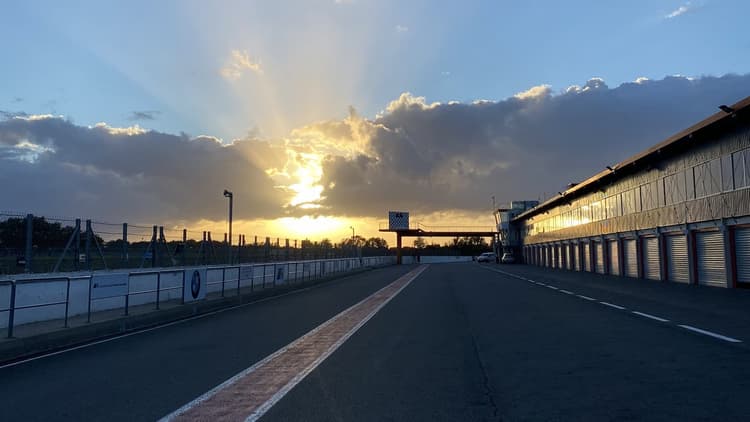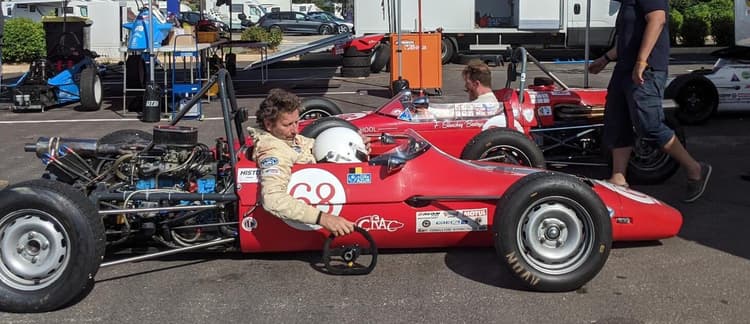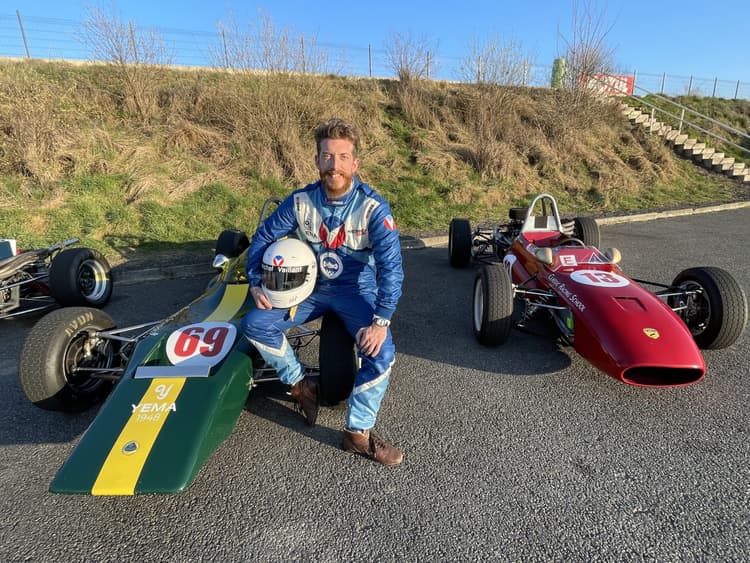Grand Prix de France Historique - Part 1
Once again I rode the highs and the lows over this race weekend. I hope you're ready, because a few of my friends who came to watch left with teary eyes.

Once again, this race weekend brought some real lows, but even more incredible highs.
I hope you are strapped in, because I had a few close friends wiping their eyes after what they saw.
A Heatwave Weekend
As you know, France baked in a heatwave that weekend. Down at Le Castellet, home of the Grand Prix de France Historique, the morning air temperature was almost reasonable - around 30C. It never climbed much above 35C in the afternoon.
Sounds manageable, maybe even a nice place to be? Not quite. Track temperature hit 56C - the same tire temperature I had at the finish in Magny-Cours three months earlier.
Inevitably, the car was cooking. During the first practice session I could not complete more than one lap without the engine overheating. So I ran one full lap, then a cooldown lap, then repeated.
Under those conditions I could not see how I would race the next day. Thankfully, Antoine, one of the Classic Racing School mechanics, found an improv solution with whatever he had on hand.
The Evin law suggests I should keep the details of this unorthodox fix to myself, but let's just say Antoine worked magic to control the engine temperature.

Blistering Lap Times
Despite the heat in practice I was immediately clocking strong lap times. Paul Ricard is forgiving, incredibly safe, and you feel comfortable right away. That let me take risks from the start because the true stakes were low.
As usual, I had watched a mountain of footage from prior years. I also studied lap times against weather variables-especially wind-to define targets.
In qualifying the previous year, Michel Dupont ran 2:39 laps and Regis Prevost 2:42. Those are my main rivals.
In my first practice session I set a 2:36, a full two seconds faster than Michel. Confidence injection.
The second session-still plagued by the cooling issues-yielded a 2:35. Almost three seconds quicker than my closest competition.
I felt I still had two more seconds in hand, maybe more.

With the frontrunners lapping in 2:29, I started dreaming about a strong overall result.
Stephane, my coach at the Classic Racing School, pointed out a few spots to gain time. Those cues would prove decisive in qualifying.
A Knife-Edge Qualifying
I rolled out confident. The car felt great, and I loved how it behaved on track. The overheating was solved, and Antoine also fixed the left-rear hub that had been messing with the brakes earlier.
I strung together a series of quick laps, watching the live times on my dash. They kept tumbling: 2:35, 2:34.5, 2:34.0, and then 2:33.9...
Based on last year's pace, that would put me inside the top twenty on the grid, miles clear of my direct rivals.
Unfortunately, they had other ideas.
I spent most of the session second in class, but in the final minutes I slipped to fifth-within half a second of the group and one second behind Brian.
Nothing tragic. After a debrief with Stephane, who has coached me since the Volant Michel Vaillant x YEMA, we identified nearly two seconds of potential still on the table.
But that meant I would need to pass them all in the race.
And if you remember the race at Dijon, you know that is easier said than done.

Pride Before the Fall
Race 1 gridded up on Saturday morning and it was already scorching. I would not get to showcase my standing-start skills because the start was rolling. But I had a plan.

The straight is long on this circuit, so you have to set up for it. I worked backward from the straight to figure out how I needed to be positioned at the final corner-and therefore where I should place the car in Turn 1.
The plan was simple: move to the right side of the track as soon as the race went green, then overtake everyone on the outside of the opening left-hander. That would slot me perfectly for the following corners and set me up for a maximum-speed slipstream down the straight.
Easy.
It is a trick I used countless times in karting. It works. It puts you right on the edge of grip-sometimes even in a controlled slide-but I know I can pull it off. I have done it before.
Except this was not karting. The grip differences in a Formula Ford are not something you can tame with arm strength alone. Worse, I forgot one major detail: Formula 1 cars had run right before us, leaving hot rubber and a hyper-grippy racing line... and a slick, dusty off-line surface.
I rolled off the grid visualizing myself running inside the top ten by Turn 2.
Into the first braking zone, I stand on the brakes a good 50 meters later than the rest and begin sweeping around the outside. I close on Michel Dupont. I am visibly faster.
I knew it. I should have anticipated it. I should have played it a little safer, trimmed the risk.
Sure, I clawed back a few positions by overdriving-angry at my rookie mistake-but the race was toast. I lost three overall spots compared to my grid slot, and my best lap barely matched qualifying pace.
Thankfully, the weekend still had a few surprises in store-and I was more than okay with that.
See you in the next article, and trust me: you do not want to miss what happens next. Sounds manageable, maybe even a nice place to be? Not quite. Track temperature hit 56C-the same tire temperature I had at the finish in Magny-Cours three months earlier.





